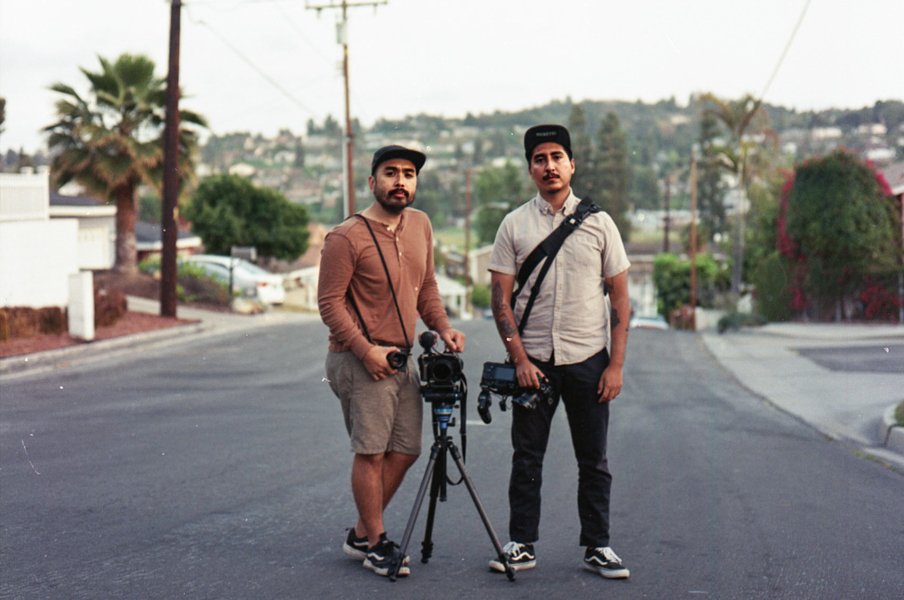Below is an excerpt from The Collective, Poynter’s newsletter by journalists of color for journalists of color and our allies. Subscribe here to get it in your inbox the last Wednesday of every month.
For a lot of journalism’s history, BIPOC experiences have been told through a white lens. Even when photojournalists and writers have come from diverse backgrounds, few decisions in the newsroom have been directed by someone BIPOC.
On one of the first days of Black Lives Matter demonstrations in Los Angeles, where we live, KTLA’s headline read, “Protestors block 101 Freeway, smash patrol car window in downtown L.A. during protest over George Floyd’s death.”
MPR News, a news organization based where Floyd lived, had the headline “‘Unbelievable devastation’: 1 dead as Floyd protests boil over again.” Its feature photo depicted buildings and a car hollowed out by fire.
A Washington Post headline read, “Night of destruction across D.C. after protesters clash with police outside White House.” The featured visual showed a silhouetted person jamming a bar into an already-destroyed car.
Being journalists of color, we saw the streets and the people on them through our own lens of shared experiences when it came to covering BLM last year. Seeing ourselves in the people we were covering or knowing their experiences firsthand brought out a powerful human element to our work: empathy. Being on the ground gave us the chance to use our own experiences to tell the stories of protesters.
While press freedom is established in the “supreme law of the land,” those who are charged with enforcing the law tend to enforce it selectively. The first night that we covered the protesting in downtown Los Angeles, police lines became impassable and often unapproachable radiuses that promised a use of force (usually by the pointing of a rubber-coated-steel-bullet gun barrel our way). While these types of interactions with police and sheriff’s departments were the norm for us, we witnessed taller, older, agency-backed, white press photographers cross the police lines with a simple nod.
Some press photographers and writers have established relationships with the police, thus making their navigating easier, but we witnessed a double standard several times when it came to younger, white journalists. Someone we met let us know they do not typically photograph protests but told us “it’s what’s trending” and said they sold their photographs on a stock photo website.
That all means that we, and other journalists who looked like us in age and/or race, were left where the police’s force was concentrated. Being physically and mentally terrorized was part of the job for us. Whenever the time came for us to gear up and get out there, we had to worry about being injured and/or arrested. We were seen as part of the crowd — not as journalists — because we weren’t allowed to cross the police line.
One of us took a safety and first-aid course by Silk Road Training as a response to our experiences. Some of the more important things we learned were how to stop bleeding, risk assessment and mitigation, understanding police and/or other types of government forces, and practicing situational awareness. While there was nothing BIPOC-specific in the course, the skills learned are useful because as JOCs we are typically the ones more susceptible to violence on the field.
We also contacted and established a connection with a pro bono lawyer from the National Lawyers Guild. Knowing our rights and asserting them, though two very different things, were essential to navigating the protests. The assertion went hand in hand with simply not giving up.
Experiencing subjective applications of the law and force, we had to learn how to read the situations and the police better. Some officers may let you cross because you say you’re part of the press, but sometimes you have to find the officer in charge of their operation and assert your rights as journalists. We had guns and batons pointed at us when trying to initiate a conversation about crossing a Los Angeles Police Department line; moments after, we saw a TV news cameraman cross with no issue. We even saw a livestreamer, with no press credentials, carrying a large U.S. flag on a pole cross with no issue.
These are ways that gatekeeping in journalism can come from law enforcement agencies. Although we are more used to gatekeeping coming from those within the journalism industry, this type of behavior goes directly against what the First Amendment attempts to establish.
Journalists given access beyond police lines get different photographs or angles of what is happening, which makes their work stand out when news organizations are looking for photos or videos to publish. This means the JOC lens won’t necessarily be applied to deciding what’s newsworthy. We were lucky and privileged enough to get through some lines, but the number of JOCs who did not get through is unknown.
We had to learn to assert our rights and find resources needed to create a safety net from the ground up. For us, that started with realizing we deserve an even playing field. We had to start talking about the obstacles we faced in the field and find ways to address them. Some of the solutions manifested as the safety and first-aid training, connecting with legal help, using the buddy system, and joining a freelance journalists union.
We need to make it clear to the police that we are there as media so that the risk of getting arrested is kept to a minimum. And we must keep a level of seriousness when interacting with them. Keep in mind, though, that sometimes being a journalist is a reason for the police to target you — they have an interest in controlling the story.
Subscribe to The Collective for access to a subscriber-only feature: advice from our Council of Truth-Tellers.
The Collective is supported by the TEGNA Foundation.






